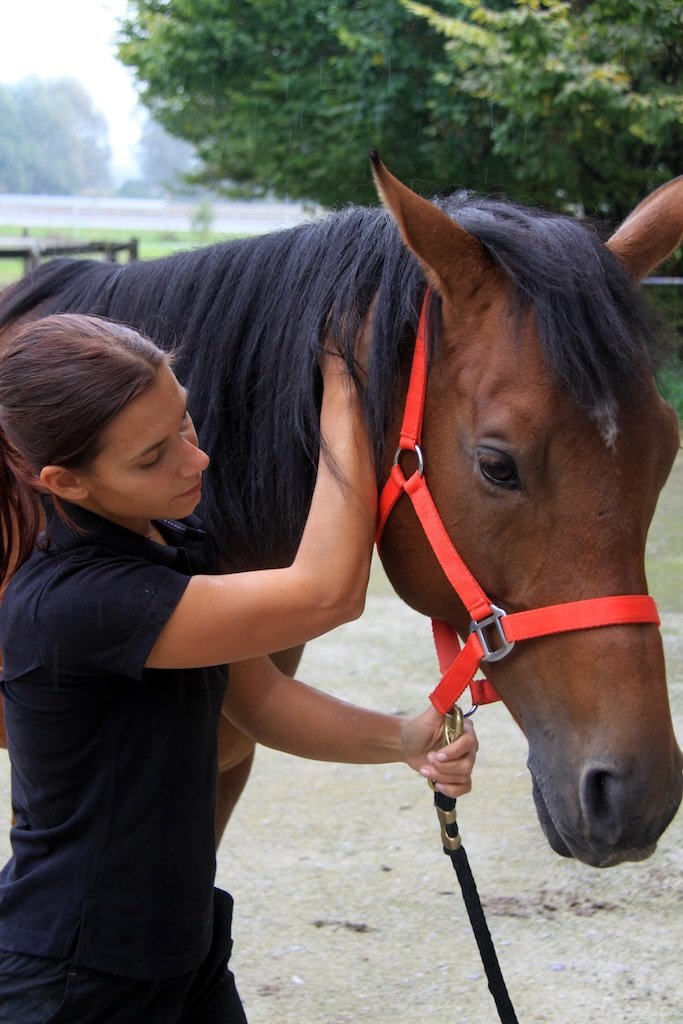The poll – form and function
The poll is an incredibly important area. To really understand it, we have to understand the function of two important joints – the atlanto-occipital and atlanto-axial joint.
The poll is an area that is often chronically tight.
Let's talk about the poll – one of my favourite subjects. The poll is an incredibly important area, both from a biomechanics as well as welfare and emotional health point of view. Many horses are chronically tight in the poll region and many riders fail to recognise this issue and its far-reaching effects. This is why I want to dedicate a couple of weeks to this precious area. First, let's take a closer look at the form and function of the poll.
The poll generally refers to the atlanto-occipital (AO) joint, which connects the first vertebrae (the atlas) with the skull (the occiput). In a wider sense the poll can also refer to the atlanto-axial (AA) joint, the joint between the first (atlas) and second (axis) cervical vertebrae. These two joints are incredibly important for horses as they enable them to move their head and neck in many different ways. Because of this ability, the poll is surrounded by a lot of small muscles, enabling finesse in movements. Without going too much into detail about the specific muscles, remember that the muscles found at the top of the poll (the ones that are most often tight), mostly act to extend the AO joint.
The AO joint can move in flexion and extension, enabling the horse to nod his head up and down. This is why it is sometimes referred to as the »yes« joint. When this joint is flexed (when the head moves towards the vertical) it also has some lateral flexion. This is the lateral flexion we are after when talking about correct bending. The AA joint is different. It enables the horse to swivel the head around the axis of the second cervical vertebrae. When the horse rotates or swivels at this joint, his nose will go to one side and his ears will go to the other side. Some people refer to this is the »no« joint. This is the joint the horse is using when tilting his head. So, correct bending comes from the action at the AO joint, while incorrect bending – tilting of the head – comes from the AA joint. Knowing this, we can draw some conclusions about the correct function of the poll.
The AO joint (1) flexes and extends, while the AA joint rotates the head.
Number one, if we want the horse to bend correctly, the AO joint must be free to passively flex. This cannot happen if the muscles of the poll are tense and shortened. Number two, if the horse is tilting the head, this is an indication that he is not using his poll correctly. Before we delve in any further into the potential issues and their implications for the entire horse, I want you to really thing about the movement of these two joints. Grab a carrot and had out to the barn. Try to use the carrot to encourage your horse to use the »yes« joint – extend and flex at the AO joint. Then see if you can elicit movement of the AA joint – use the carrot to guide your horse into swivelling his head. The sole purpose of this exercise is to familiarize yourself with the movements of these joints, but it is vital for understanding how the head and neck work during balanced movement. Next week, when you will have (hopefully) done the exercise, we will delve a bit more into what can go wrong with these tow joints and the entire poll area.

